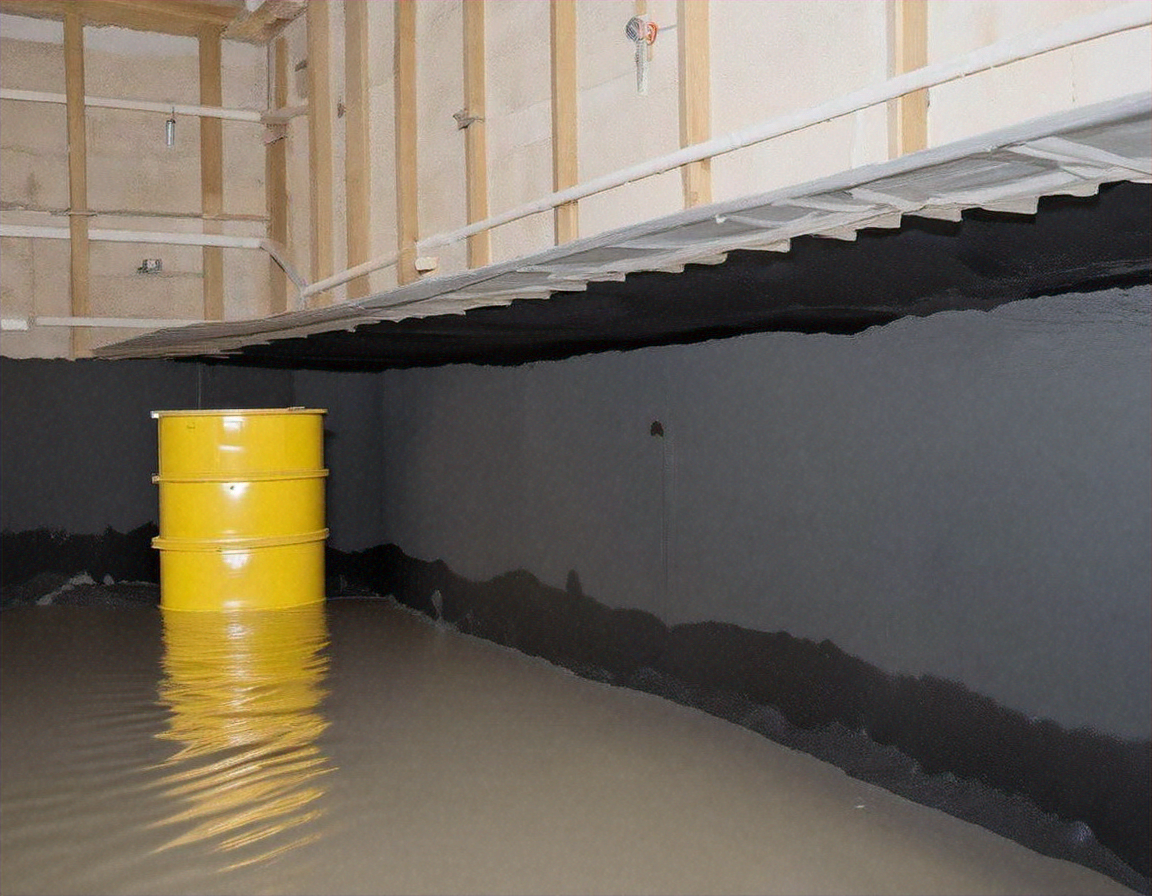How to Dry Your Basement from the Inside
A damp basement can lead to structural damage, mould growth, and poor air quality in your home. Taking measures to dry your basement from the inside is essential to protect your property and create a healthier living space. With the right techniques and tools, you can effectively combat excess moisture, control humidity, and prevent leaks from causing long-term problems. Let's explore these methods!

Why is drying your basement crucial for your home?
Drying your basement is crucial for maintaining the integrity of your home’s foundation and ensuring a healthy living environment. Excess moisture in your basement can lead to a host of problems, including mould growth, wood rot, and structural damage. These issues not only compromise the safety of your home but can also lead to expensive repairs if left unchecked. Moreover, a damp basement can affect the air quality throughout your entire house, potentially causing respiratory problems and allergies for you and your family.
What are the main causes of basement moisture?
Understanding the root causes of basement moisture is essential for implementing effective solutions. Common sources of basement dampness include:
-
Poor drainage around the foundation
-
Cracks in the foundation walls or floor
-
Condensation from high humidity levels
-
Leaky pipes or plumbing issues
-
Inadequate ventilation
-
Groundwater seepage
Identifying the specific cause of moisture in your basement will help you choose the most appropriate drying method and prevent future problems.
What are effective methods for basement waterproofing?
There are several effective methods for waterproofing your basement from the inside:
-
Install a dehumidifier: This is one of the most straightforward ways to reduce moisture levels in your basement.
-
Apply waterproof sealants: Use specially formulated sealants to coat your basement walls and floor, creating a barrier against moisture penetration.
-
Improve ventilation: Install exhaust fans or open windows (if possible) to promote air circulation and reduce humidity.
-
Fix any leaks: Repair plumbing issues and seal cracks in the foundation to prevent water ingress.
-
Use a sump pump: Install a sump pump system to remove excess water that may accumulate around your foundation.
-
Insulate pipes: Wrap cold water pipes to prevent condensation, which can contribute to basement moisture.
How does internal sealing differ from external waterproofing?
Internal sealing and external waterproofing are two different approaches to protecting your basement from moisture:
Internal sealing involves applying waterproof coatings or membranes to the inside of your basement walls and floor. This method is generally less expensive and less disruptive than external waterproofing. It’s ideal for existing homes where excavation around the foundation is not feasible or cost-effective.
External waterproofing, on the other hand, involves excavating the soil around your foundation and applying a waterproof membrane to the exterior walls. This method is more comprehensive and can prevent water from entering your basement in the first place. However, it’s typically more expensive and invasive, often requiring professional assistance.
What unique challenges do UK homeowners face with basement moisture?
In the United Kingdom, homeowners face unique challenges when it comes to basement moisture due to the country’s climate and building practices. The UK’s frequent rainfall and high humidity levels can exacerbate basement dampness issues. Additionally, many older homes in the UK have basements that were not originally designed with modern waterproofing techniques in mind. This means that retrofitting these spaces for moisture protection can be more challenging and may require specialized solutions tailored to the specific construction methods used in British homes.
What are the costs and effective solutions for a dry basement?
The cost of drying and waterproofing a basement can vary significantly depending on the size of the space, the severity of the moisture problem, and the chosen method. Here’s a breakdown of some common solutions and their estimated costs:
| Solution | Provider | Cost Estimation |
|---|---|---|
| Dehumidifier | Various brands (e.g., Meaco, EcoAir) | £100 - £300 |
| Waterproof sealant | Permagard, Safeguard | £30 - £100 per 5L |
| Sump pump installation | Local plumbers or waterproofing specialists | £800 - £2,000 |
| Internal tanking system | Basement Waterproofing Ltd. | £3,000 - £7,000 |
| External waterproofing | Timberwise, Peter Cox | £5,000 - £15,000 |
Prices, rates, or cost estimates mentioned in this article are based on the latest available information but may change over time. Independent research is advised before making financial decisions.
For most homeowners, a combination of methods will yield the best results. Starting with affordable solutions like dehumidifiers and sealants can often make a significant difference. If these prove insufficient, more comprehensive waterproofing measures may be necessary. It’s advisable to consult with a professional waterproofing specialist to assess your specific situation and recommend the most cost-effective solution for your home.
In conclusion, drying your basement from the inside is a crucial step in protecting your home from moisture damage and ensuring a healthy living environment. By understanding the causes of basement dampness and implementing appropriate waterproofing methods, you can effectively combat moisture issues and preserve the integrity of your property. Whether you opt for DIY solutions or professional services, addressing basement moisture promptly will save you money and headaches in the long run.




